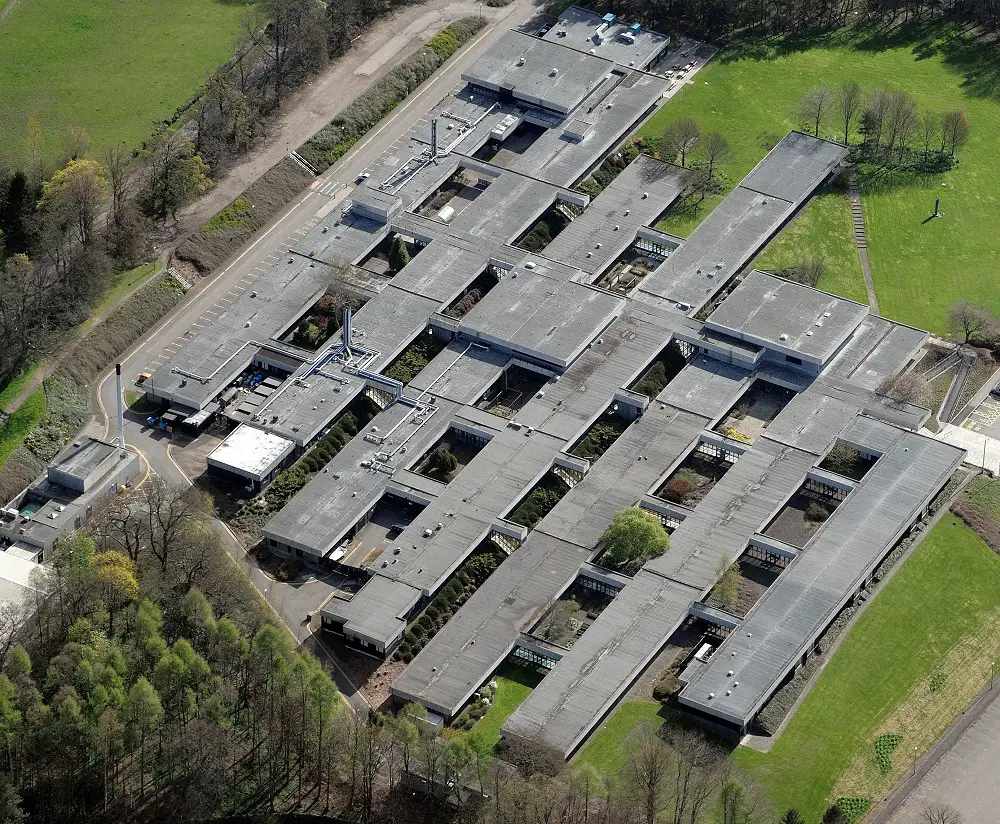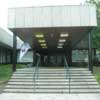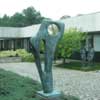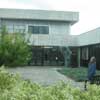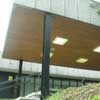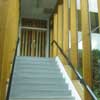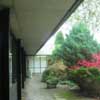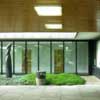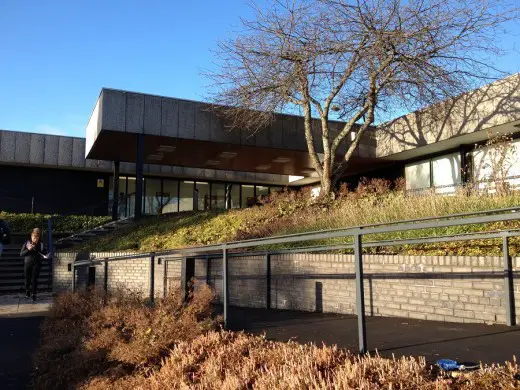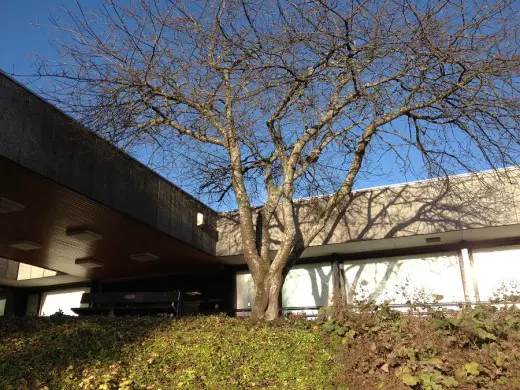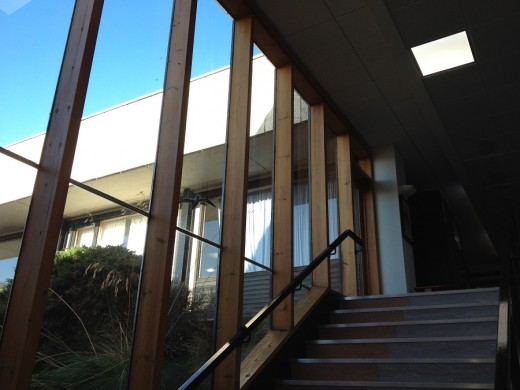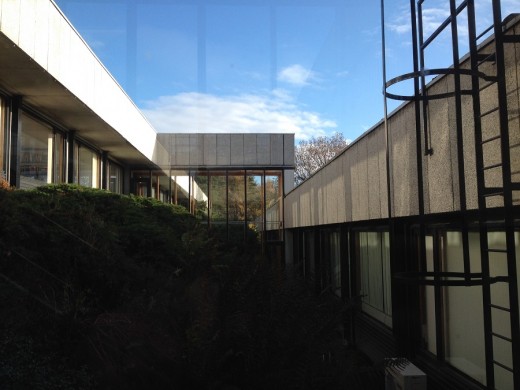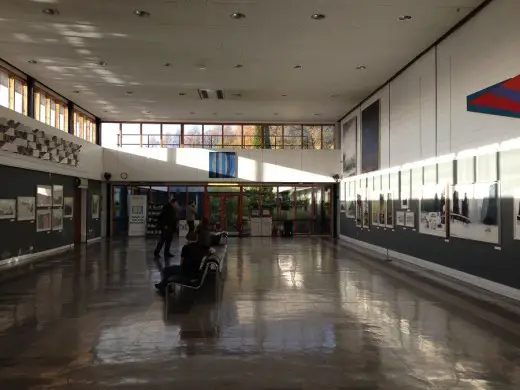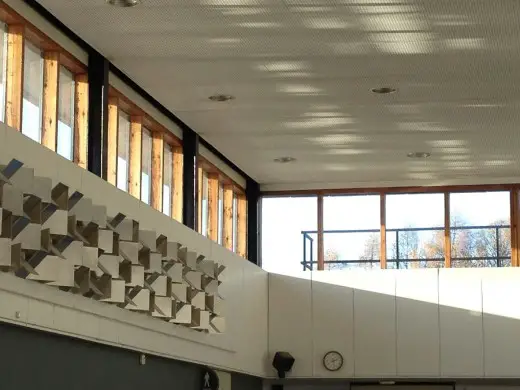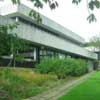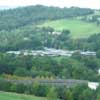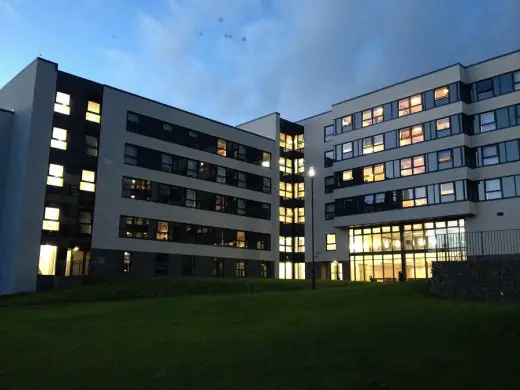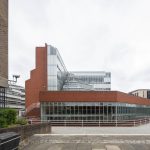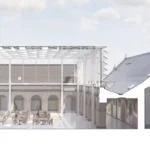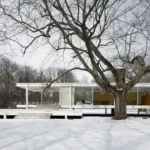Pathfoot Building at the University of Stirling Photos, Kinlochard, John Richards Architect
Pathfoot Building, University of Stirling
Grade A listed Modern Higher Education Facility in Scotland – design by RMJM, architects
post updated 19 May 2025
Date built: 1966-67
Design: Robert Matthew, Johnson-Marshall and Partners (RMJM) architects
Grade A listed Pathfoot Building at the University of Stirling
Listing Category: A
Date listed: 15 May 2009
Location: Pathfoot Building, The University of Stirling, Stirling, FK9 4LA, Scotland, UK
Aerial photograph:
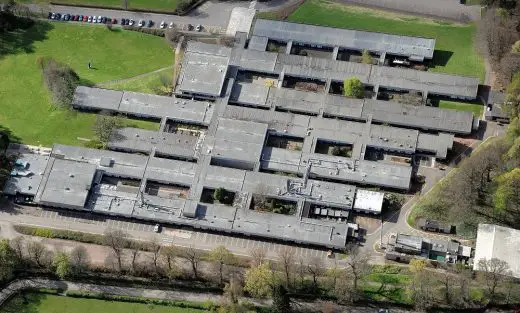
picture courtesy UoS
30 Nov 2015
Pathfoot Building at University of Stirling
An outstanding example of post-war Modernist Scottish architecture, of international significance.
This is a 20th Century tertiary education building in a parkland landscape setting.
A highly flexible plan form that influenced Norman Foster’s Willis Faber Dumas Building In Ipswich.
Aerial photo:
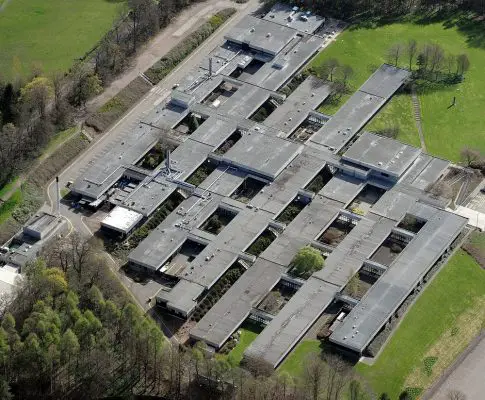
image courtesy UoS
The University was built around, and centred on Airthrey Loch. The Pathfoot Building is however located remotely to the west, by the campus entrance, apparently to reduce noise and disruption that would be created during construction of the central buildings.
The residential buildings were located on the south-facing slopes, and the teaching buildings on the north-facing slope.
The fairly compact single-storey arrangement allowed flexibility for future changes of use. The courtyards provided natural daylight and ventilation to reach the thin strips of building.
Pathfoot Building Stirling University
The website British Listed Buildings says this about this Modernist Building:
“Robert Matthew, Johnson-Marshall and Partners, 1966-1967 with later additions, including block to south 1993 (John Richards, partner-in-charge; Gerrard Bakker, project architect; Frank Clark, landscape designer). Set of 6 linked extensive rectangular-plan single storey Modernist teaching blocks of modular design (including main lecture theatre, crush hall, and cafeteria), with single double height space to each block, running E to W with perpendicular glazed corridor blocks running N to S enclosing small courtyards, all on ground stepped up to N arranged as terraces and in picturesque landscape setting.”
Website: University of Stirling Pathfoot Building
Alistair Fair is a Chancellor’s Fellow at the University of Edinburgh, says this of the building on the 20th Century Society website:
“Pathfoot is located at the north end of the campus, on a hillside close to the entrance and away from what was to become the core of the university on the banks of the Airthey Loch. Its location was selected after a site walkabout by Richards, Matthew, and the university’s dynamic Principal, Tom Cottrell, and the aim was to avoid the noise and disruption that would be created by the subsequent construction of the main part of the university. Pathfoot was planned as a series of parallel single-storey ‘strips’ of building, with a gap 36 feet wide between each strip. Rising up the hill, the strips form a series of terraces. Internally, each has a central spine corridor with 36 feet of space to either side, arranged as necessary – for example, as offices or laboratories. Connecting the strips at right angles are linking corridors, which as they cross the open gaps between the strips create seventeen external landscaped courtyards. Views of these courts are gained from the corridors through full-height glazing. The views and the change in level across the site both avoid any sense of monotony. At the core of the complex is an open hall, put to good use as a meeting place and a public gallery for the university’s art collection.”
Website: Pathfoot Building at University of Stirling conservation
Scottish Conservation architects Simpson and Brown say this about the Pathfoot Building:
“With the proposed listing of a number of modernist buildings on the University campus, we were commissioned to write a conservation plan to aid the University in managing the proposed change in status and to propose a conservation framework for the site in the future. Often referred to as one of the most beautiful campuses in the UK, the former Airthrey Estate was developed in the late 1960s by the architects RMJM, with other notable contributions from Reiach and Hall and Morris and Steedman – three of Scotland’s most significant post-war modernist architecture practices. The University campus is recognised as a key development from that era – one which sits remarkably well with the surviving 18th century designed landscape and the Robert Adam designed Airthrey Castle.
The listing review by Historic Scotland concluded with the listing of RMJM’s Pathfoot Building – the first of the modern university buildings on the campus – in category A; the Principal’s House by Morris and Steedman incategory A; the same practice’s staff housing in category B; and the bridge over Airthrey Loch in category C.”
Website: University of Stirling buildings conservation
The University of Stirling conservation plan states this:
“This conservation plan has been commissioned by Stirling University Estates and Campus Services Department. The aim of this report is to inform the future conservation, repair, use and management of the buildings and landscape of the University of Stirling. It will inform future proposals for conservation and repair work to the buildings, as well as alterations that are required to facilitate their ongoing and improved use where required. The conservation plan assesses and sets out in summary what is important about the campus, and the information gathered is then considered in an assessment of cultural significance, for the site as a whole and for its various parts, to be summarised in this report by a summary statement of significance. Eleven character areas within the campus have been identified and analysed.”
Website: University of Stirling conservation plan
The building design was highly influenced by contemporary Danish architecture such as the Louisiana Museum of Modern Art designed by Jorgen Bo and Wilhelm Wohlert (with a strong relationship to nature) and the rational work of architect Arne Jacobsen .
Prior to the completion of the final Development Plan at the UoS, the Interim Development Committee visited a total of ten universities in Winter 1967. The principal Tom Cottrell wrote a detailed report about the trip. John Richards from RMJM accompanied the Committee. The ten universities that the Committee visited were: Nottingham, Warwick, Oxford, Southampton, Sussex, Kent, Essex, East Anglia, York and Durham. This gave the Committee a variety of institutions from Ancient to Plate-glass, concentrating on the latter for closer comparison.
The architect John Richards had an interest in the ‘traditional Oxford staircase layout’ of the Brasenose College accommodation blocks designed by architects Powell & Moya. John Richards made notes on the costs and standards of each university that was visited.
The Pathfoot Building design echoes the horizontality and simple concrete-panelled forms of the Royal Commonwealth Pool in Edinburgh.
The decision in favour of locating a new university at Stirling was announced on the 17th July 1964. It was the only new non-urban campus in Scotland, joining seven new ones in England – East Anglia, Lancaster, York, Kent, Sussex, Warwick and Essex, following recommendations made by the seminal Robbins Report Higher Education of 1963.
The university was originally referred to as a ‘plate glass university’ (rather than a ‘red brick university’), a phrase that was coined by Michael Beloff in his 1968 book of the same name.
Pathfoot Building Architectural Context
Buildings which share some relationship architecturally:-
– University of York, Northern England, from 1962 by RMJM
standardised prefabricated construction, constructed using the CLASP system.
– Royal Commonwealth Pool in Edinburgh, Scotland, by RMJM led by John Richards
horizontaility, simple massing, prefabricated concrete panelling
– Louisiana Museum, Denmark by Jorgen Bo and Wilhelm Wohlert
relationship to landscape / nature, on a sloping site
– New University of Ulster at Coleraine, Northern Ireland, (from 1968) by RMJM led by Robert Matthew
– University of East Anglia, England, by Denys Lasdun
University of East Anglia buildings
– Scarborough College, Toronto, Ontario, Canada by John Andrews
– Amsterdam Orphanage, Netherlands, 1960 by Aldo van Eyck
‘mat plan’ approach
Frankfurt-Römerberg and Berlin Free University, Germany, 1963, by Candilis Josic Woods
‘mat plan’ approach
Berlin Hauptstadt design, Germany, 1958 by and Alison and Peter Smithson
‘mat plan’ approach
– Ninewells Hospital, Dundee, Scotland, 1959-, by RMJM
courtyard layout, Ninewells Hospital Building by RMJM Architects + Robert Matthew
Pathfoot Building References
Further useful references:
McKean, John Maule, ‘RMJM at Stirling’, Architectural Review (June 1973) pp 348-366
S Muthesius, ‘The Postwar University: Utopian Campus and College’ (2000)
J Gifford, F Walker, ‘The Buildings of Scotland: Stirling and Central Scotland’, (2002) p 790
RCAHMS, Robert Matthew, Johnson-Marshall, drawings collection (2008).
Beloff, Michael, ‘The Plateglass Universities’ (1968) p 11
Murray, Peter, ‘University of Stirling’, Architectural Design (March 1973)
Stirling University buildings aerial image – 3 new blocks being Juniper Court, Beech Court and Willow Court, from right to middle of photo:
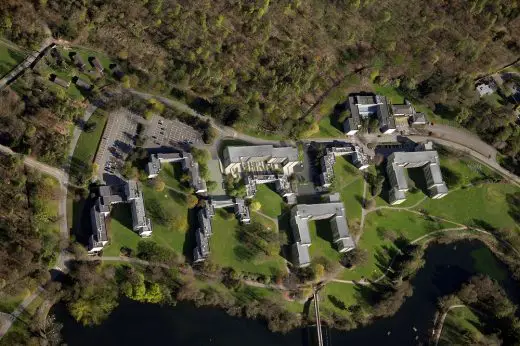
Location: Pathfoot Building, The University of Stirling, Stirling, FK9 4LA, Scotland
University of Stirling Buildings
Pathfoot Building, University of Stirling
Date: 1967
Architects: Robert Matthew, Johnson-Marshall and Partners (RMJM)
Pathfoot Building University of Stirling
New Library, University of Stirling
Date renewed: 2010
Architects: Lewis & Hickey
University of Stirling Buildings
Student Residences, University of Stirling
Date: 1970
Architects: Robert Matthew, Johnson-Marshall and Partners (RMJM)
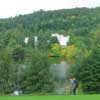
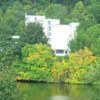
photos © IL
Juniper Court Halls of Residence, completed Summer 2015:
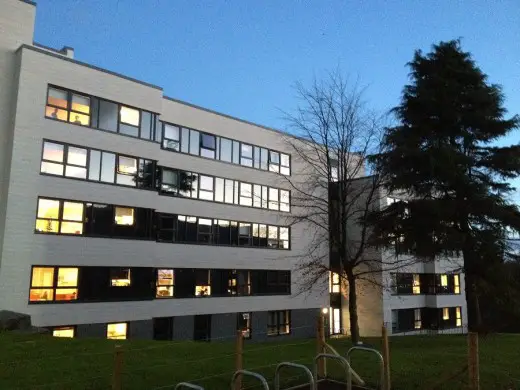
Architecture in Scotland
Scottish Architecture Designs – chronological list
Stirling Buildings
Battle of Bannockburn Visitor Centre
Stirling Office Building at Castle Business Park
Design: Michael Laird Architects
Comments / photos for the Pathfoot Building at Stirling University – Modern Scottish Higher Education Architecture page are welcome

